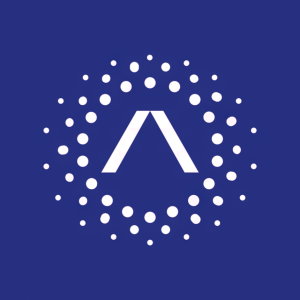Stellantis Partners with dSPACE to Accelerate Cloud-based Development of Vehicles
Rhea-AI Summary
Stellantis (NYSE: STLA) and dSPACE have signed a non-binding MOU to accelerate cloud-based vehicle development. The partnership will integrate dSPACE's VEOS platform for Software-in-the-Loop testing into Stellantis' Virtual Engineering Workbench (VEW), enabling faster software development and testing up to a year before hardware availability.
The collaboration aims to enhance Stellantis' software strategy, built on three AI-powered platforms: STLA Brain, STLA SmartCockpit, and STLA AutoDrive, set to debut in 2025. On new technology platforms, 80-85% of testing is conducted on SIL platforms, reducing vehicle software delivery time to under two years.
The VEW features a Virtual Cockpit that accelerates development cycles up to 100 times compared to traditional methods, serving over 3,800 active daily users.
Positive
- Integration enables software testing up to 1 year before hardware availability
- 80-85% of testing conducted on SIL platforms reduces development time to under 2 years
- Development cycles acceleration up to 100x through Virtual Cockpit
- 3,800 active daily users demonstrate successful platform adoption
Negative
- MOU is non-binding and subject to definitive agreement
News Market Reaction 1 Alert
On the day this news was published, STLA gained 0.85%, reflecting a mild positive market reaction.
Data tracked by StockTitan Argus on the day of publication.
Stellantis Partners with dSPACE to Accelerate Cloud-based Development of Vehicles
- Partnership with dSPACE will provide Stellantis with a powerful simulation platform to drive faster and higher-quality software innovations
- Cloud-based development, integration and validation enable Stellantis engineers to start testing and developing software up to a year before production hardware is available
- dSPACE solutions are integral to the Stellantis Virtual Engineering Workbench (VEW), streamlining software development cycles
AMSTERDAM, January 7, 2025 – Stellantis, one of the world’s leading automakers, and dSPACE, a leader in simulation and validation solutions, today announced they have signed a non-binding Memorandum of Understanding (MOU) aimed at accelerating the cloud-based development of Stellantis vehicles.
The collaboration will integrate dSPACE’s VEOS platform for Software-in-the-Loop (SIL) testing into the Stellantis Virtual Engineering Workbench (VEW), enabling faster, scalable development of customer-focused features.
The VEW empowers Stellantis engineers worldwide to refine software early in development, leveraging virtual environments to develop, integrate, test and optimize up to a year before hardware becomes available. On its new technology platforms, 80
The Stellantis software strategy is built on three AI-powered technology platforms – STLA Brain, STLA SmartCockpit and STLA AutoDrive, which will debut on select vehicles in 2025. These platforms, developed on the VEW, ensure agile feature delivery across Stellantis’ 14 iconic brands.
“The integration of dSPACE tools into our Virtual Engineering Workbench will allow us to deliver innovative features faster, meeting customer expectations and enhancing their driving experience,” said Yves Bonnefont, Stellantis Chief Software Officer. “This collaboration is pivotal in realizing our vision for intelligent, connected vehicles and providing customers with continuous improvements via over-the-air updates.”
“The use of our products on the new Stellantis technology platforms enables us to gather direct customer input and feedback. This close collaboration will help us advance our software products and provide the most sophisticated and efficient tool chain for the validation of software-defined vehicles, enabling early integration and seamless combination of SIL and HIL test methods,” said Carsten Hoff, CEO at dSPACE.
The Stellantis VEW features a first-of-its-kind Virtual Cockpit, which helps accelerate development cycles by up to 100 times compared to traditional methods. With over 3,800 active unique daily users, it exemplifies Stellantis’ commitment to innovation, sustainability and delivering high-quality customer experiences.
The implementation of the proposed non-binding MOU is subject to a definitive agreement.
# # #
About Stellantis
Stellantis N.V. (NYSE: STLA / Euronext Milan: STLAM / Euronext Paris: STLAP) is one of the world’s leading automakers aiming to provide clean, safe and affordable freedom of mobility to all. It’s best known for its unique portfolio of iconic and innovative brands including Abarth, Alfa Romeo, Chrysler, Citroën, Dodge, DS Automobiles, FIAT, Jeep®, Lancia, Maserati, Opel, Peugeot, Ram, Vauxhall, Free2move and Leasys. Stellantis is executing its Dare Forward 2030, a bold strategic plan that paves the way to achieve the ambitious target of becoming a carbon net zero mobility tech company by 2038, with single-digit percentage compensation of the remaining emissions, while creating added value for all stakeholders. For more information, visit www.stellantis.com.
X @Stellantis
Facebook Stellantis
LinkedIn Stellantis
YouTube Stellantis
For more information, contact:
Fernão SILVEIRA +31 6 43 25 43 41 – fernao.silveira@stellantis.com
Nathalie ROUSSEL +33 6 87 77 41 82 – nathalie.roussel@stellantis.com
communications@stellantis.com
www.stellantis.com
About dSPACE
dSPACE is a leading provider of simulation and validation solutions worldwide for developing connected, autonomous, and electrically powered vehicles. The company’s range of end-to-end solutions are used particularly by automotive manufacturers and their suppliers to test the software and hardware components in their new vehicles long before a new model is allowed on the road. Not only is dSPACE a sought-after partner in vehicle development, engineers also rely on our know-how at dSPACE when it comes to aerospace and industrial automation. Our portfolio ranges from end-to-end solutions for simulation and validation to engineering and consulting services as well as training and support. With more than 2,800 employees worldwide, dSPACE is headquartered in Paderborn, Germany; has three project centers in Germany; and serves customers through its regional companies in the USA, the UK, France, Japan, China, Croatia, Korea, India and Sweden.
For more information, contact:
Bernd Schäfers-Maiwald +49 5251 1638-714 – bschaefers-maiwald@dspace.de
Ulrich Nolte +49 5251 1638-1448, – unolte@dspace.de
Stellantis Forward Looking Statements
This communication contains forward-looking statements. In particular, statements regarding future events and anticipated results of operations, business strategies, the anticipated benefits of the proposed transaction, future financial and operating results, the anticipated closing date for the proposed transaction and other anticipated aspects of our operations or operating results are forward-looking statements. These statements may include terms such as “may”, “will”, “expect”, “could”, “should”, “intend”, “estimate”, “anticipate”, “believe”, “remain”, “on track”, “design”, “target”, “objective”, “goal”, “forecast”, “projection”, “outlook”, “prospects”, “plan”, or similar terms. Forward-looking statements are not guarantees of future performance. Rather, they are based on Stellantis’ current state of knowledge, future expectations and projections about future events and are by their nature, subject to inherent risks and uncertainties. They relate to events and depend on circumstances that may or may not occur or exist in the future and, as such, undue reliance should not be placed on them.
Actual results may differ materially from those expressed in forward-looking statements as a result of a variety of factors, including: the ability of Stellantis to launch new products successfully and to maintain vehicle shipment volumes; changes in the global financial markets, general economic environment and changes in demand for automotive products, which is subject to cyclicality; Stellantis’ ability to successfully manage the industry-wide transition from internal combustion engines to full electrification; Stellantis’ ability to offer innovative, attractive products and to develop, manufacture and sell vehicles with advanced features including enhanced electrification, connectivity and autonomous-driving characteristics; Stellantis’ ability to produce or procure electric batteries with competitive performance, cost and at required volumes; Stellantis’ ability to successfully launch new businesses and integrate acquisitions; a significant malfunction, disruption or security breach compromising information technology systems or the electronic control systems contained in Stellantis’ vehicles; exchange rate fluctuations, interest rate changes, credit risk and other market risks; increases in costs, disruptions of supply or shortages of raw materials, parts, components and systems used in Stellantis’ vehicles; changes in local economic and political conditions; changes in trade policy, the imposition of global and regional tariffs or tariffs targeted to the automotive industry, the enactment of tax reforms or other changes in tax laws and regulations; the level of governmental economic incentives available to support the adoption of battery electric vehicles; the impact of increasingly stringent regulations regarding fuel efficiency requirements and reduced greenhouse gas and tailpipe emissions; various types of claims, lawsuits, governmental investigations and other contingencies, including product liability and warranty claims and environmental claims, investigations and lawsuits; material operating expenditures in relation to compliance with environmental, health and safety regulations; the level of competition in the automotive industry, which may increase due to consolidation and new entrants; Stellantis’ ability to attract and retain experienced management and employees; exposure to shortfalls in the funding of Stellantis’ defined benefit pension plans; Stellantis’ ability to provide or arrange for access to adequate financing for dealers and retail customers and associated risks related to the operations of financial services companies; Stellantis’ ability to access funding to execute its business plan; Stellantis’ ability to realize anticipated benefits from joint venture arrangements; disruptions arising from political, social and economic instability; risks associated with Stellantis’ relationships with employees, dealers and suppliers; Stellantis’ ability to maintain effective internal controls over financial reporting; developments in labor and industrial relations and developments in applicable labor laws; earthquakes or other disasters; risks and other items described in Stellantis’ Annual Report on Form 20-F for the year ended December 31, 2023 and Current Reports on Form 6-K and amendments thereto filed with the SEC; and other risks and uncertainties.
Any forward-looking statements contained in this communication speak only as of the date of this document and Stellantis disclaims any obligation to update or revise publicly forward-looking statements. Further information concerning Stellantis and its businesses, including factors that could materially affect Stellantis’ financial results, is included in Stellantis’ reports and filings with the U.S. Securities and Exchange Commission and AFM.
Attachment









